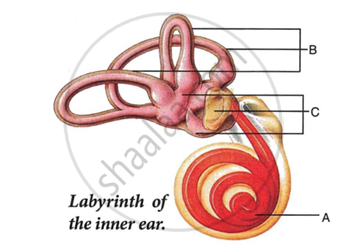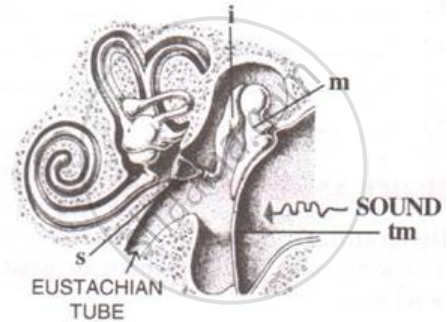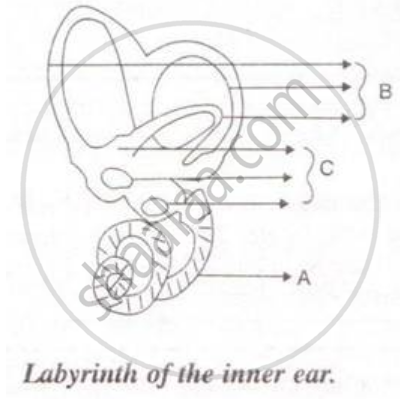Advertisements
Advertisements
Question
find odd one from following: Malleus, iris, Stapes, Incus.
Solution
Odd term: Iris
Category: Parts of human ear (middle ear)
APPEARS IN
RELATED QUESTIONS
Which part of our body helps us in maintaining the body balance?
Deafness is causal due to the rupturing of the Pinna.
What is the function of ear ossicles?
Differentiate between the Rods and Cones of Retina (Type of pigment)
Name the following:
The ear ossicle attached to the tympanum.
Note the relationship between the first two words and suggest the suitable word for the fourth place.
sound : ear drum :: Dynamic balance : ……
Mention if the following statement is true (T) or false (F) Give reason.
The auditory nerve is purely for perceiving sound
Where is the oval window located? Briefly mention its function.
With reference to the human ear, answer the question that follow:
Name the nerve, which transmits messages from the ear to the brain.
Given below is the diagram of a part of the human ear. Study the same and answer the questions that follow:
 |
Give the collective biological term for Malleus, locus and Stapes.
Draw a neat and labelled diagram of the human ear. With the help of this diagram, explain the construction and working of the human ear.
Choose the correct answer.
Labyrinth is a part of ____________
The figure below is the sectional view of a part of the skull showing a sense organ:

What do you call the part shown in the form of a spiral? What is its function?
Given below is a diagram of a part of the human ear. Study the same and answer the question that follow:

Name the parts labeled A, B and C in the diagram.
State the Location:
Semicircular canals
Choose the Odd One Out:
The range of audible frequency for the human ear is
The hearing range of the human ear is ______.
______ is the smallest bone in the human body.
The spiral organ possessing sensory cells for hearing is ______.
